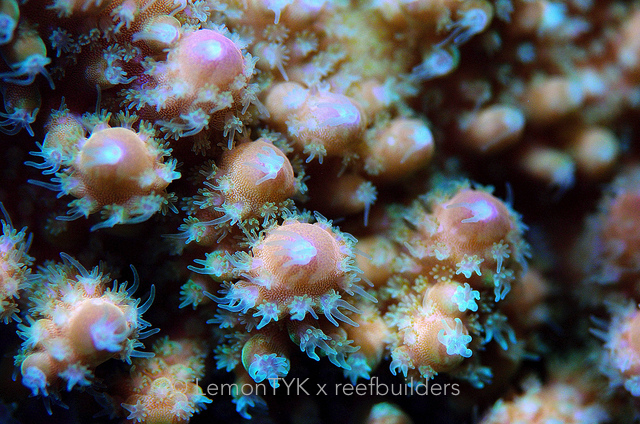Humans. Colonial bipedal creatures of soft squishy texture, seeking the safety of artificially constructed nests in which they live in. A coral colony can be viewed in a similar fashion, and while lacking the socio-economics and political agendas that a thriving and growing civilization possesses, a coral colony is in some ways superficially similar to a developing city inhabited by earth’s tool wielding Homo. For the uninitiated, that’s us.

Like a lonely nomadic settler, a single coral polyp seeks to shelter itself in its calcareous chamber. So it has found a nice place to establish itself, and to build its empire. Like people, one become two and two become four and soon, a small congregation arises. Humming to the tune of A Hard Day’s Night, a city is being erected. A growing colony with resident polyps. Very nice. Meanwhile our human counterparts are establishing something similar, in houses clustered together. Everyone is friendly, neighbours are neighbourly.
What to do for food? Our sclerectinian friends are growing their own food! With built in zooxanthellae they have no problems with farming and self sustenance. Tentacles! They have those too, to catch floating particles and plankton in which they supplement their passive food farming. Pasty humans are doing the same, growing crops under the sun. Agriculture is an important source of sustenance for our developing city. While humans do not have tentacles, they have spears and other weapons for hunting. Deer and rabbits would make good sources of protein. After all, who wants to eat cabbages everyday right?

By now our coral and human cities have grown nicely and are thriving very well on their own. Nice solid branches and tall skyscrapers are all part of the package. But wait, there’s a disturbance. A potential threat lies ahead, and it appears they’re both being invaded. What happens when a potential coral colony is being invaded by another species? Well, it depends really. Corals are equipped with an arsenal of defensive as well as aggressive mechanisms to stand their grown and protect their land.
Chemical allelopathy can dissuade or affect the growth and potential encroachment of a nearby colony. Sweepers that sting and kill within a given radius can help push back enemy forces, while others simply overtake by rapid growth and numbers. Our people party are just as well equipped. Armies and infantry battalions push back opposing forces on the ground, while long ranged airstrikes help to secure forces above ground.

It’s a win or lose, and war is always a gamble. So they win, and damages are sustained. We move on, rebuild and regrow. Likewise with the humble coral. Not all intruders are hostile however, and our developing civilizations will soon learn that cohesive cohabitation with friendly settlers will eventually result in the building of a city. Years go by and the lonely nomad coral is now part of a complex reef, and so is the town that once was. Now a developing nation.
Random ramblings.



